Spaying and neutering procedures are normal for cats and are always recommended because they can provide our feline friends with many health benefits, improve their behavior, and prolong their lifespan.
Besides that, spaying and neutering may also reduce unwanted behaviors in cats, such as spraying, aggression, and similar.
Many people wonder when is the best time to spay/neuter a cat, and I assure you that there’s no correct answer to this question.
You can spay and neuter your cat at any age; however, it’s always recommended to do it at a young age, that is, 4-6 months old, in order to prevent possible complications.
Still, there are several things you need to pay attention to after the procedure to avoid possible complications. So, read on to find out more!
An Infected Spay Incision In Cat
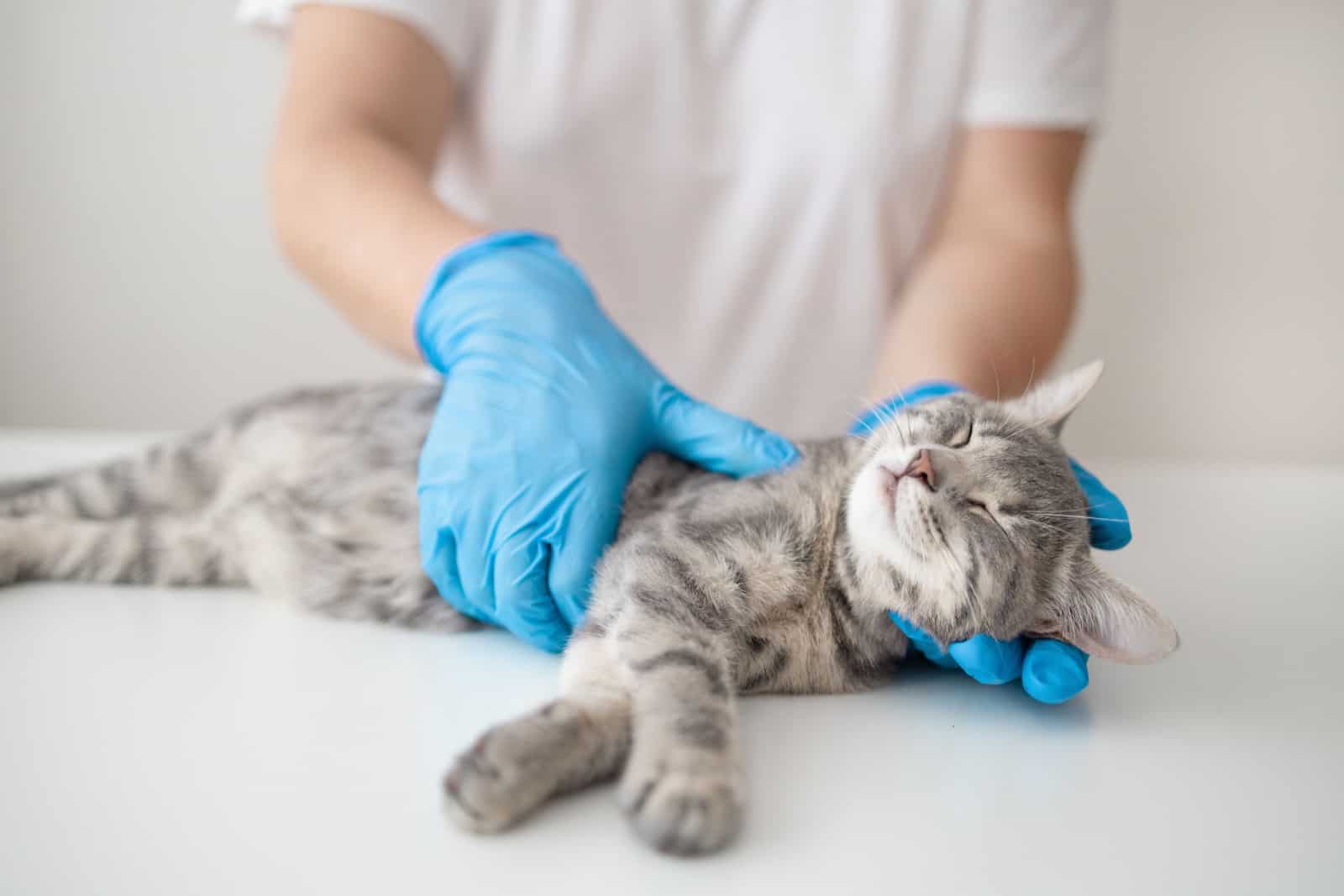
The spaying surgical procedure, also called ovariohysterectomy, usually is not complicated.
This is the process of making a small incision through the abdominal wall and removing the reproductive organs in female cats (the ovaries and uterus), meaning that they cannot reproduce.
One of the most common problems after spay surgery is infection. This is why the after-care period is very important.
An infection of the spay incision occurs due to bacterial contamination of the incision. Normally, the spay incision may be a bit inflamed and itchy while healing. However, that may bother your feline friend and cause the cat to lick or bite the incision area.
Cats shouldn’t lick or touch the incision as they may transfer the bacteria from their mouth to the spay incision leading to a bacterial infection. The risk of different infections is also higher if your cat is allowed to play outside before the incision heals.
This is why it’s crucial to pay special attention and keep the cat confined until the healing period ends. The healing period usually lasts a week or two; however, an infected spay incision in a cat may prolong the recovery period, and it may be very painful for your cat.
To learn more about how to deal with an infected spay incision in cat, keep reading and check out the signs and what you should do if your cat’s spay incision gets infected.
You may also like to know if a neutered cat can still mate!
Symptoms Of An Infected Cat Spay Incision
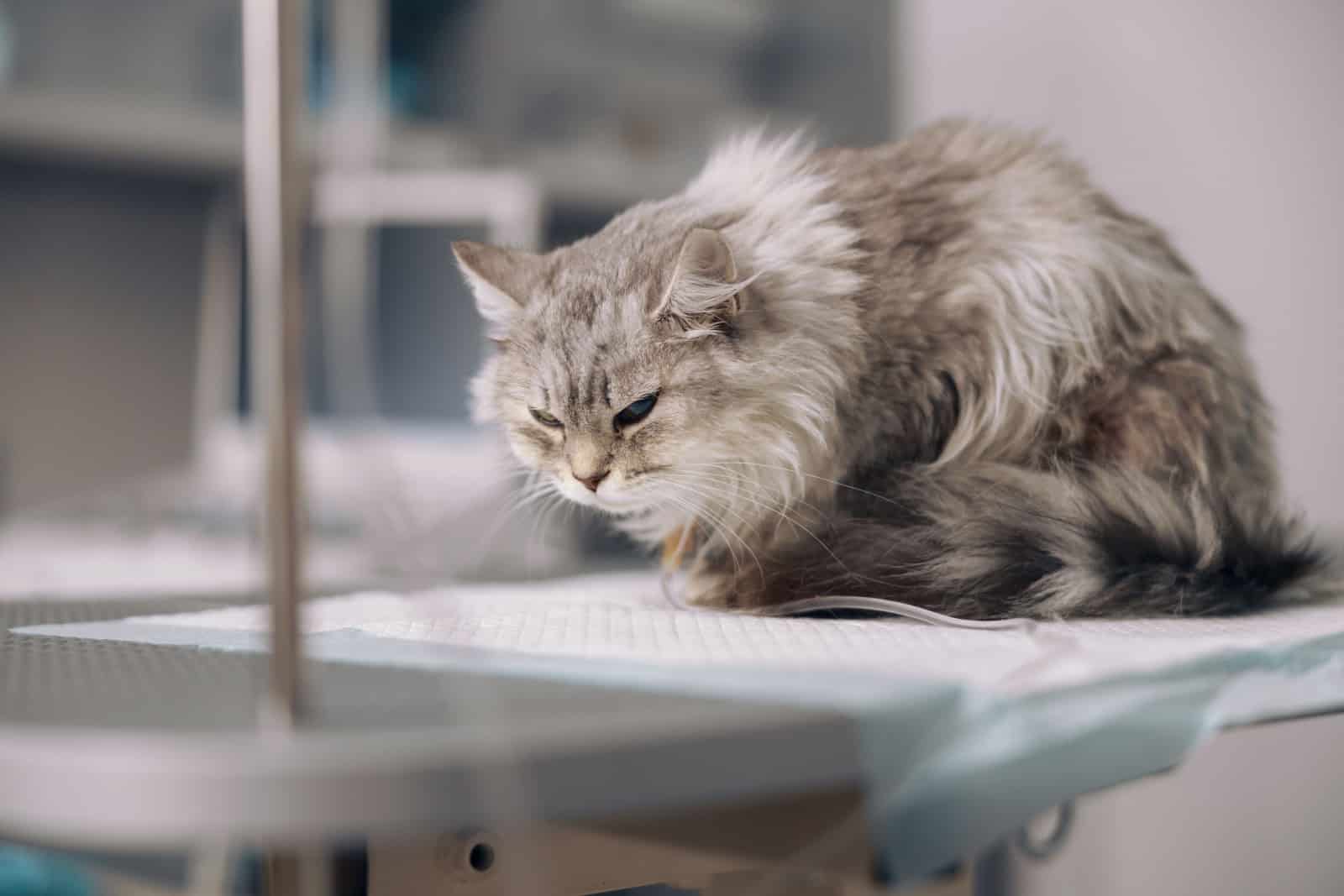
Infections may happen in the spay incision; therefore, you need to monitor your cat closely and look for signs of infection so that you can react on time. Common symptoms of spay incision infections include:
• Pain – if the spay incision is painful for your cat, that is not a good sign but rather a sign of infection. Usually, a spay incision isn’t painful for felines, only itchy and irritating. So, if your cat starts showing signs of pain, you should take it to the vet for a checkup.
• Bleeding – a small amount of bleeding normally occurs during the first 24 hours after the spaying procedure. However, if the bleeding continues, it may be a sign of an infected spay incision in cat, or it may indicate another issue that needs to be taken care of.
• Red skin or erythema – after the spaying procedure, it’s normal for the incision area to be pink or light red; however, if you notice excessive redness and inflammation or discoloration of the skin, that may be a sign of infection or another complication.
• Odor – usually, a normal spay incision doesn’t smell bad. Therefore, if your cat’s spay incision starts producing odors, it may be time to take your cat to the vet, as odors usually indicate infection.
• Fluid buildup – this refers to the seroma, which is a pocket of fluid that forms within the layers of tissue around the spay incision. This is common in spay incisions, but it may lead to problems if the cat is too active during the healing period, when the serome may lead to inflammation or infections.
• Heat – another sign of an infected spay incision in cat is when the incision area is too hot. So, the spay incision area should be warm, just like the rest of the body. but if you notice that it’s hotter than the rest of the cat’s body, especially if accompanied by some of the previously mentioned signs, then you should contact your vet immediately.
Other Possible Complications
The main issue arises if your cat’s incision site becomes infected and it’s not treated on time or dealt with properly. Unfortunately, such things may lead to even more complications, like the following:
• Dehiscence – this is a condition where a wound or the surgical incision opens. This may also lead to abdominal organs protruding from the wound.
• Septicemia – this is a life-threatening condition where bacteria enter the bloodstream. Luckily, this issue isn’t very common, but still, you should be careful, as it can happen.
Because of these possible complications, it’s crucial to monitor your cat’s behavior and the incision condition.
So, if you notice that your cat is suddenly lethargic, has a fever, or has some of the previously mentioned symptoms, it means that you should take your feline friend to the vet right away, to prevent further complications from developing.
How To Treat An Infected Cat Spay Incision?
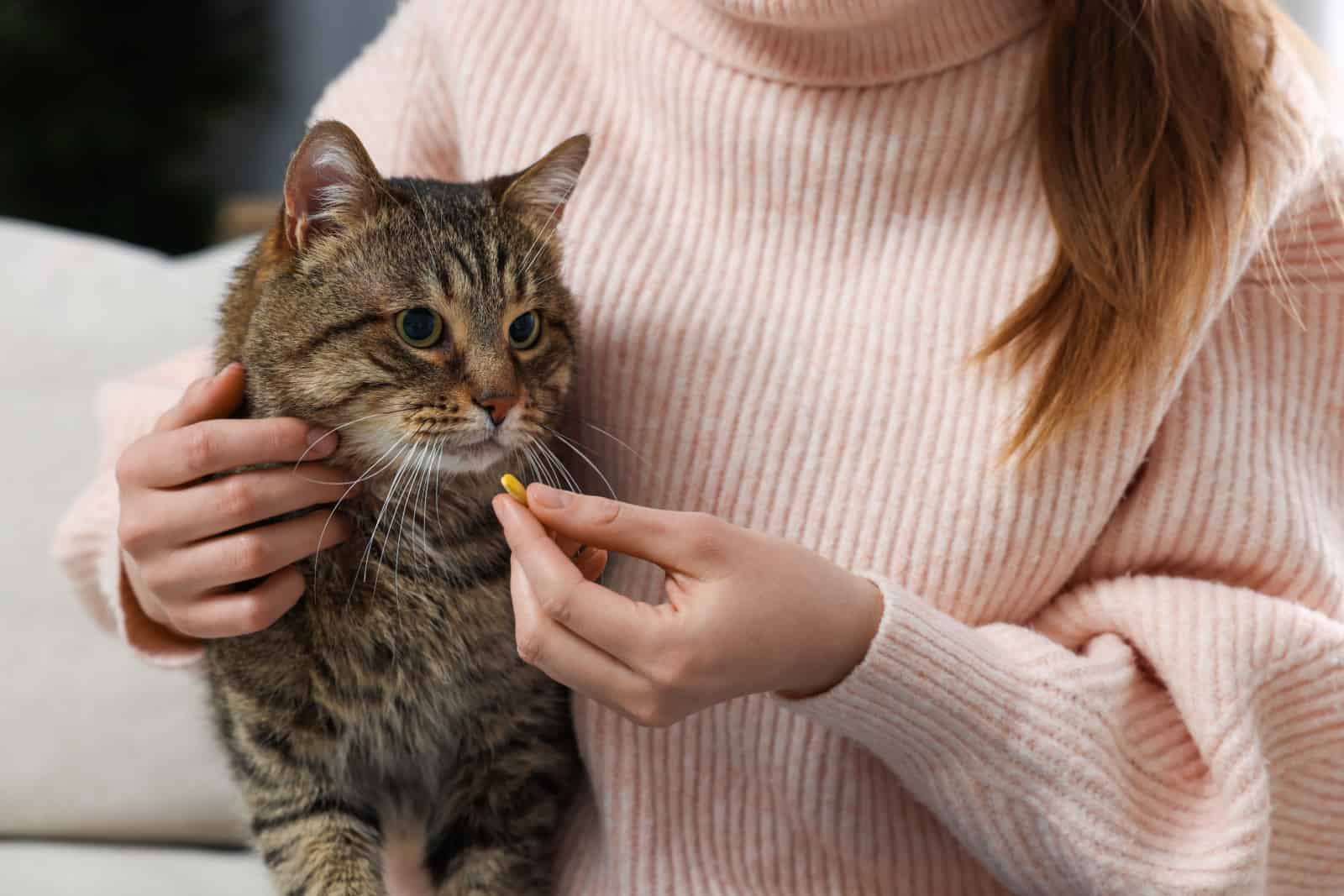
Before any type of treatment, first, you should take your cat to the vet for an examination. If the vet determines that the cat’s spay incision is infected, then they will start with certain treatments, depending on the severity of the infection.
For example, if the cat suffers from a minor and less serious type of infection, I usually prescribe oral antibiotics for the cat, creams, or pain medications.
I also give instructions to the cat owner for proper incision care. After the course of antibiotics, I always examine the cat again to see how the healing is progressing.
In severe infection cases, a surgical debridement may be required. This procedure involves the removal of infected tissue and reclosure.
Additionally, in some severe cases, such as septicemia, the cat will need to be hospitalized in a veterinary clinic and receive intensive care.
Moreover, in minor cases, the vet will instruct you on what to do at home. Besides oral antibiotics, you’ll have to clean the cat’s surgery site.
To do that properly, you should use clean and warm water or some ointments prescribed by your vet and gently clean around the cat’s wound.
Just make sure you follow every step that the vet says and your cat will recover in a blink of an eye.
Also, find out how to know when a cat is done giving birth!
How To Prevent Infections In A Cat Spay Incision?
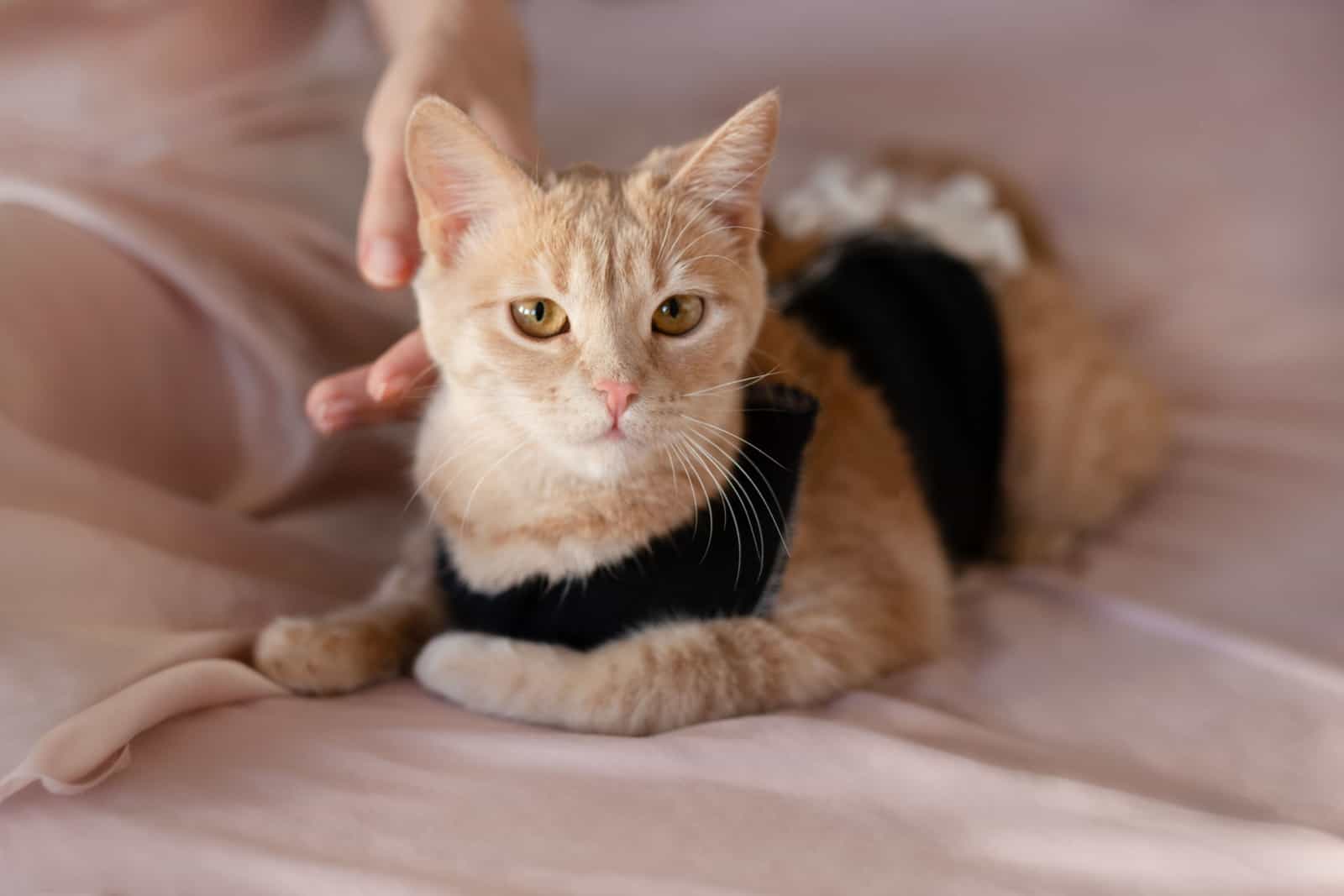
All of the things that I mentioned previously in the article can be avoided with certain preventive measures.
So, if you want to keep your cat safe during the healing process and avoid possible complications such as infections and similar, then here are some tips on how to prevent a cat spay incision from getting infections.
• Limit your cat’s movement – the most important thing for the post-surgery period is for a cat to rest, in order to avoid possible injuries to the surgical site. That means that you need to limit your cat’s activity and movement and secure the area so that it cannot injure itself.
To do this, it would be best to provide your kitty with a small, secure, and quiet area where it will stay during the recovery period. In a small room, your cat won’t be able to run or jump; therefore, the risk of possible injuries to the wound is low, and your cat can normally recover on time.
Make sure you also provide your cat with all the necessities, such as a litter box, food and water bowl, and a comfortable cat bed where it can rest.
• Provide your cat with an Elizabethan collar – as previously mentioned, cats may lick or scratch their incision, which increases the risk of infections. To prevent that, you should provide your cat with a cone collar to wear all the time during the healing period.
With the cone collar, your cat won’t be able to reach the incision area, which is a good thing. However, some cats may have difficulties adjusting to the e-collar, and some may adapt very quickly.
If your cat is trying to remove it, and succeeds, then you should find another alternative, such as a softer cone, or ask your vet for another recommendation or solution.
• Avoid bathing or getting the incision wet – the spay incision should be dry during the recovery period; therefore, you should forget about bathing your cat. Moreover, pay attention not to get the incision wet as the moisture may increase the risk of infection.
So, to avoid that, you shouldn’t touch the cat’s incision. If your vet advises you to clean the incision, avoid using alcohol or hydrogen peroxide, but you should do it with warm, clean water and clean only around the incision. Of course, after that, ensure that the area is completely dry to avoid complications.
• Pay attention to the cat’s spay incision – monitoring and taking notes on your cat’s incision is of great importance as it can help you notice certain changes such as the first signs of infection, or other issues, more easily.
A normal and healthy incision should have all the skin sutures intact. So, if your cat has external sutures, it would be best to count them so that you will later know if any of them are missing.
Moreover, make sure that the incision area is always clean and, most importantly, dry to avoid the risk of infections. Also, you should follow your vet’s instructions on taking care of your cat during the healing period and contact the vet if you notice any changes in the cat’s wound.
How Long Will The Recovery From Spaying Last?
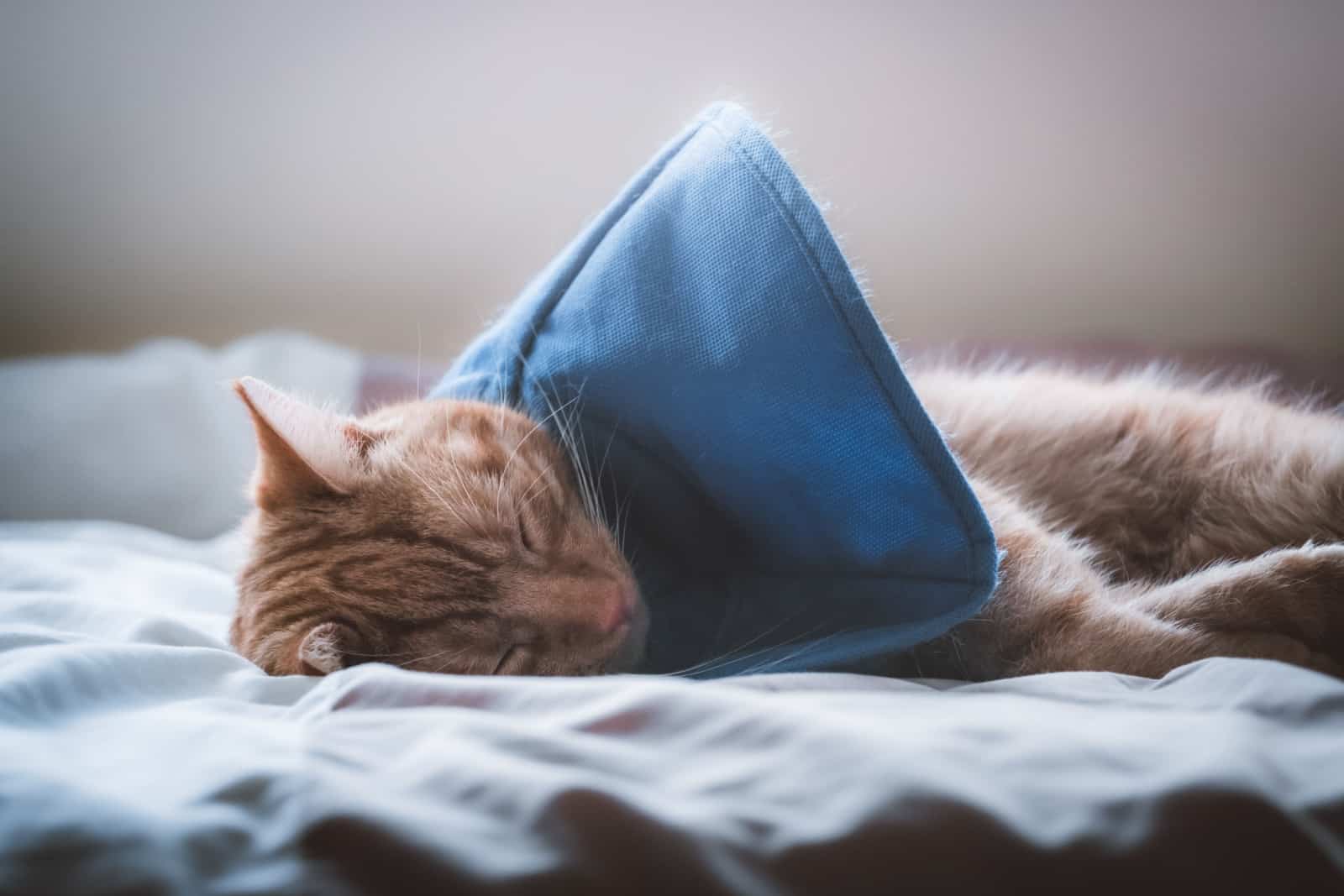
The recovery period depends on your cat and how it handled the surgery. Some cats may recover faster than others. Usually, cats will recover after spaying in a week or two.
After that period of time, the vet will usually remove the stitches, and then your cat can slowly go back to its normal daily activities.
If the spay incision gets infected, that may prolong the recovery period. Depending on the severity of the infection and the cat’s condition, the recovery may last up to a month.
Are Spay Incision Infections Common For Cats?
When it comes to cat spay incision, the number one issue that may appear is infection; however, this isn’t very common nowadays with the improvement of surgical techniques. So, the risk of infection during the surgical procedure is very low.
The risk of infection is higher during the healing period, especially during the first week after the surgery. Because of that, you need to take good care of the incision and monitor your cat, as well as prevent it from licking or biting the wound.
So, whether a spay incision will get infected doesn’t just depend on your cat but also on you and the way you take care of it.
You might be interested in why female cats attack males after mating!
What Should A Normal Healing Cat Spay Incision Look Like?
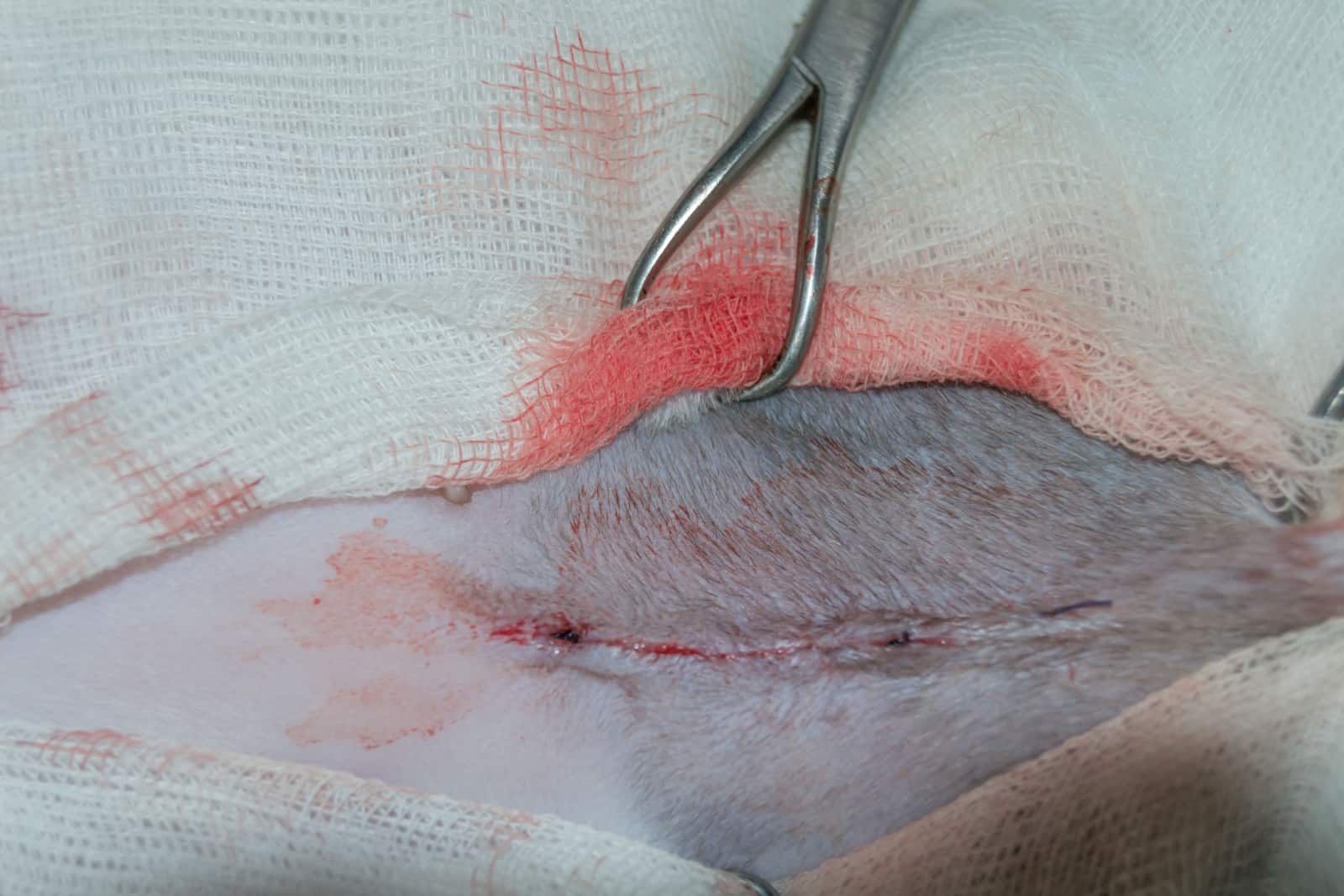
Another important thing is to know what should a normal healing incision look like so that you can react on time if you notice any changes.
A healthy spay incision in a cat should be clean and pink, and the incision edges should touch each other. If your cat has external sutures, they should also be clearly visible.
Small traces of blood or discharge are normal only during the first 24 hours after the surgery. Therefore, if you notice bleeding and discharge after 24 hours, you should inform your vet about it.
Slight inflammation of the incision area is also normal, and the wound should be warm but not warmer than the rest of the body.
So, if you notice any changes, such as bleeding, loss of sutures, hot incision area, red and inflamed skin, and similar changes, it’s a sign that something’s wrong and that you need to inform the vet about it so that they can treat the issue properly.
Final Thoughts
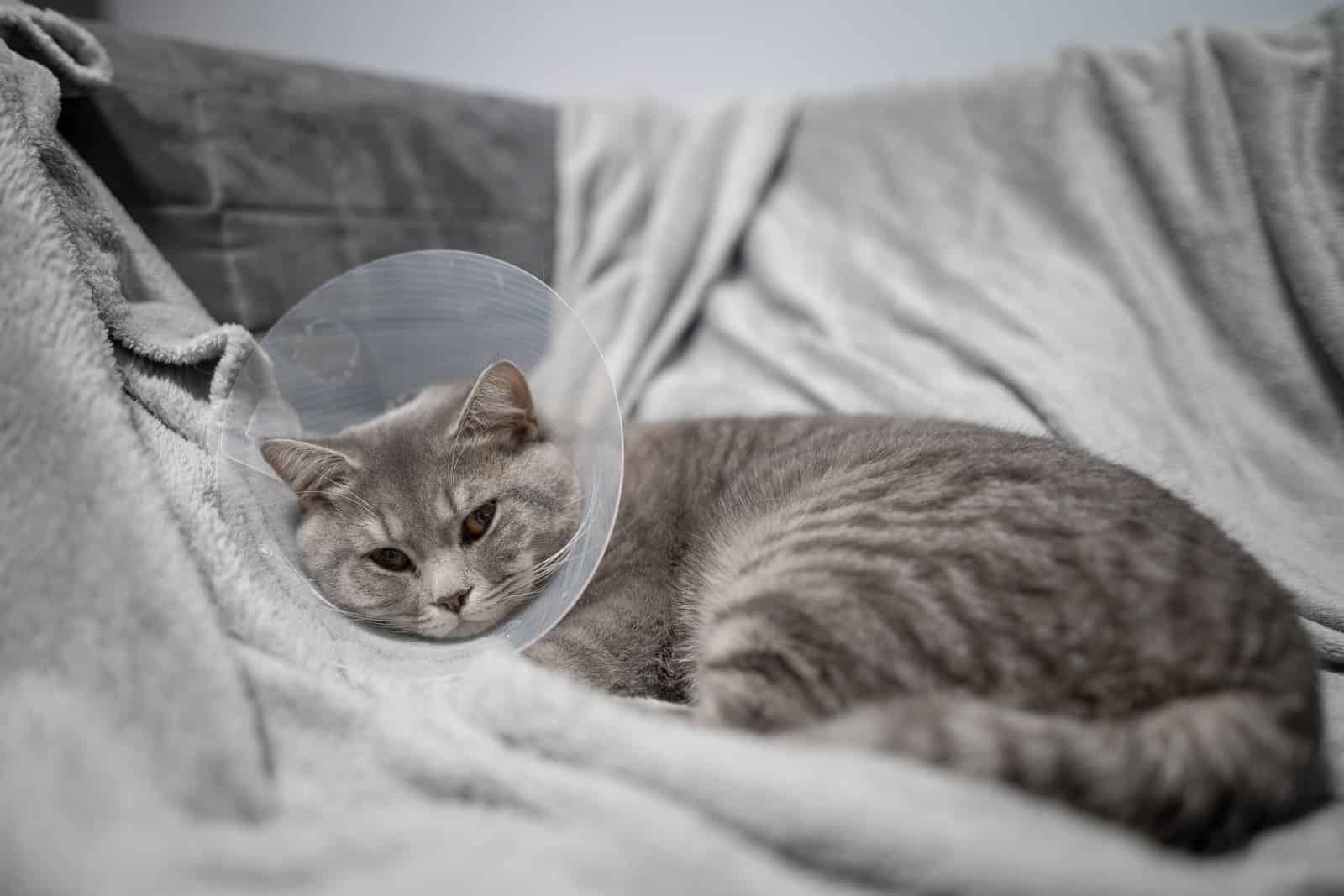
All in all, the spaying or neutering procedure is not complicated at all, and if everything goes well with good care, the cats usually recover very fast.
However, you need to pay special attention to your cat because if you don’t, its spay incision may get infected, which leads to many problems.
An infected spay incision in cat may be very painful, and it may also prolong the healing period. Because of that, this article provides you with the necessary information on how to take care of an infected spay incision and also what you can do to prevent such complications.So, now that you have read the article, you should know what a normal healing incision should look like. Therefore, if you notice any changes on your cat’s incision site, make sure you contact your vet immediately and take your cat for an examination.
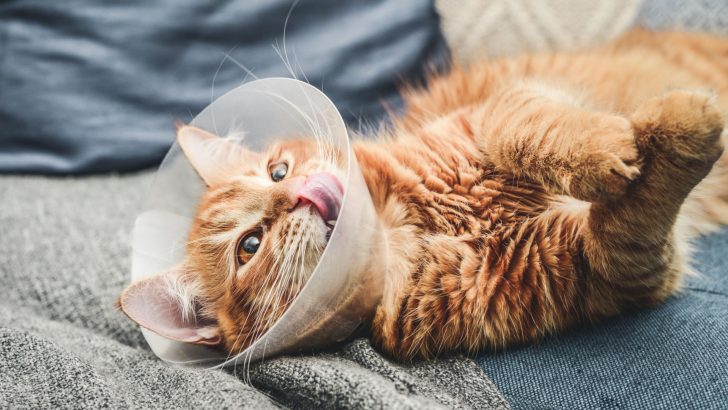
Leave a comment